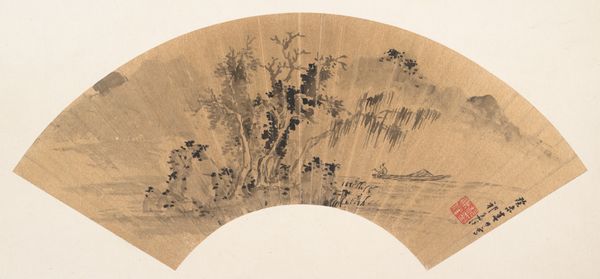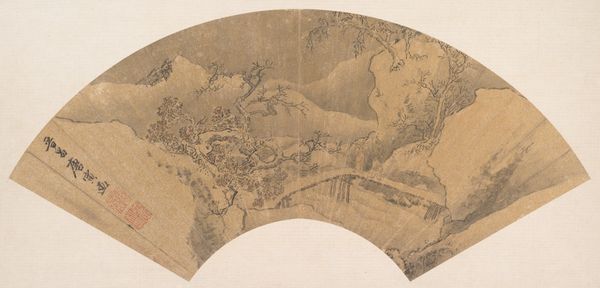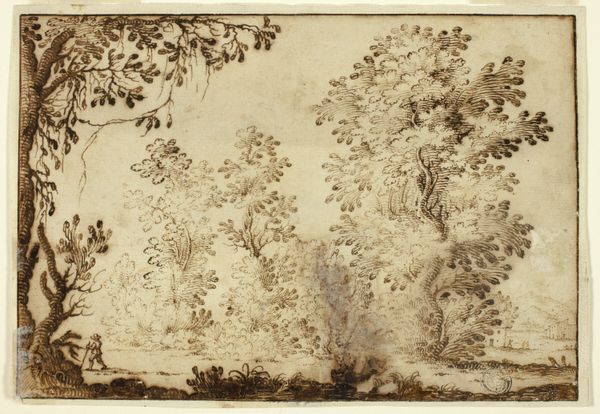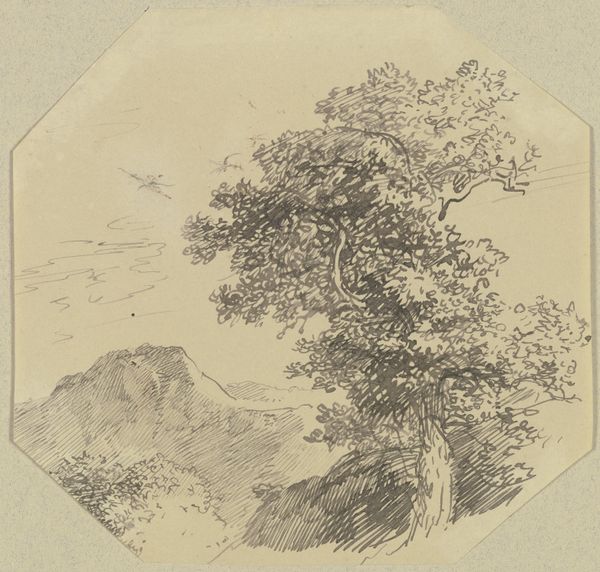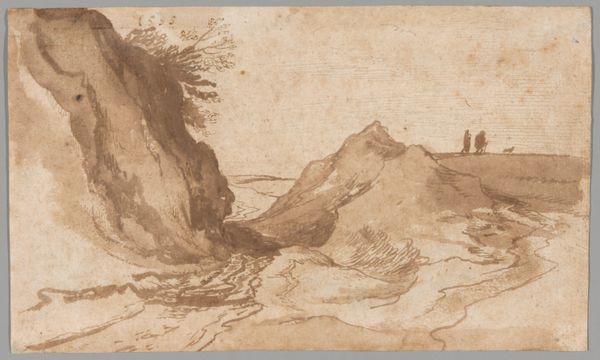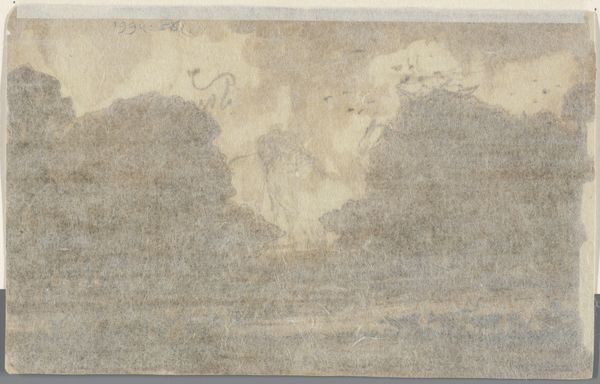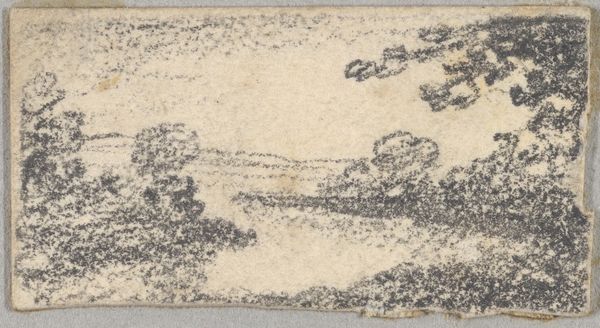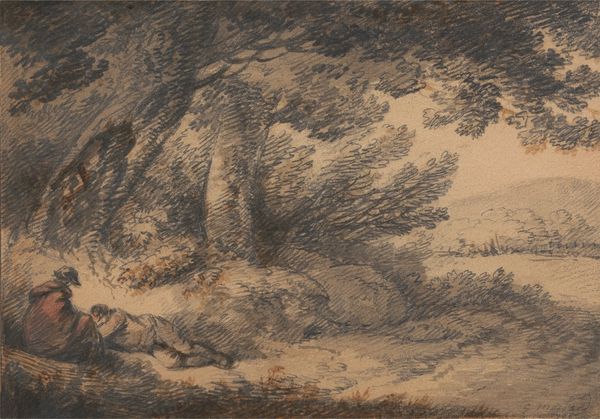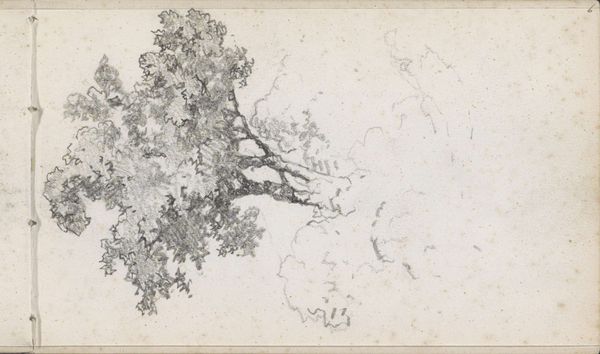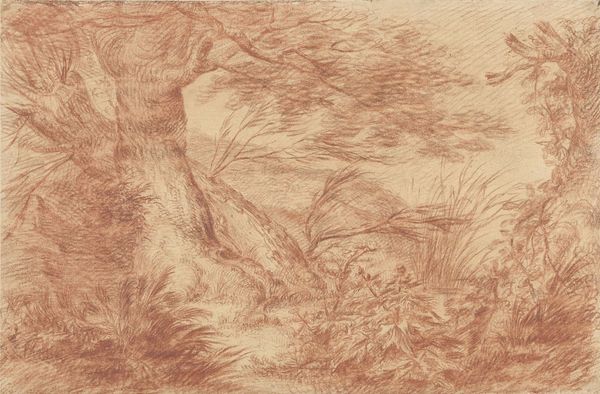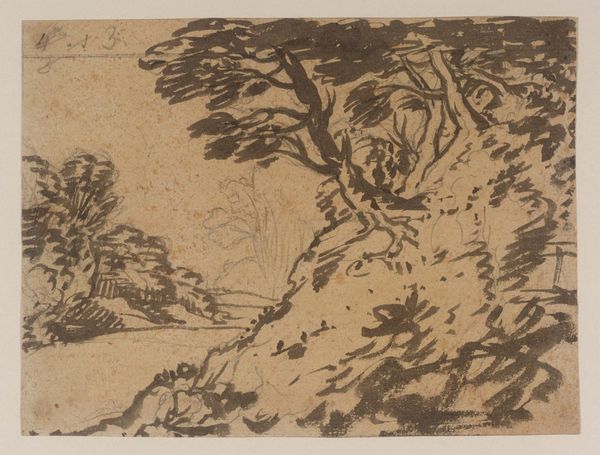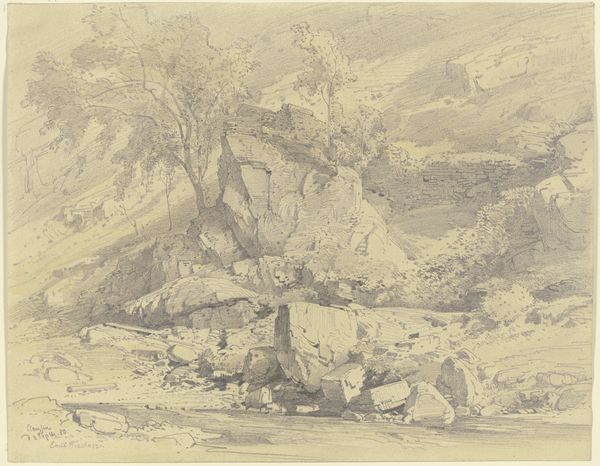
#
aged paper
#
toned paper
#
water colours
#
possibly oil pastel
#
coloured pencil
#
underpainting
#
pastel chalk drawing
#
china
#
watercolour bleed
#
watercolour illustration
#
watercolor
Dimensions: 9 5/8 x 20 3/4 in. (24.45 x 52.71 cm) (image, sheet)
Copyright: Public Domain
Editor: We’re looking at “Stormy Landscape with Fishermen at Sea,” from around the 17th century, currently held at the Minneapolis Institute of Art. It appears to be watercolour on toned paper. It’s really striking how the artist captured the dynamism of the wind and water with such delicate brushstrokes. How do you interpret the composition in this piece? Curator: The composition immediately suggests a structured interplay between form and void, an application of semiotics if you will. Consider the use of the fan shape itself; it dictates a reading that moves along a curve. Note the balance created between the density of the ink in the foreground rocks and foliage and the relatively empty expanse of sky and water. How does this structural division impact your perception of the landscape itself? Editor: I see how that curvature affects how I view the boat's trajectory. It emphasizes their navigation against the elements. I guess it guides my eyes more, making it feel less chaotic. But, what is the artist trying to convey by playing with these elements in a pictorial sense? Curator: The interplay of contrasting textures and tonalities creates an evocative tension. The rough, jagged rocks are juxtaposed with the fluidity of the water. Similarly, there is dynamic interplay between solid and ephemeral forms. How would you say that these contrasting elements inform the aesthetic experience? Editor: That is so interesting. I had not looked at it in such abstract terms before. Now it looks almost less like a depiction and more like a statement, maybe even a proposition! Curator: Precisely. Now consider that our statement is framed, bound in the edges of a fan, ready for discourse or consideration. In doing so we participate with the work, bringing life to the space it contains, until, one day, it begins again... Editor: That’s given me a whole new way of thinking about landscape painting. Curator: Indeed. Analyzing the formal structure can open a dialogue about an artist's intent without relying on external narratives.
Comments
minneapolisinstituteofart almost 2 years ago
⋮
Many leading artists, both calligraphers and painters produced fan paintings. Literati were often at their best in small format paintings where the subtleties of brushwork could be readily appreciated and discerned. Folding fans were often produced as gift paintings; some were mounted directly as albums while others were removed from their bamboo stays, backed with paper and compiled into albums. These selections are from such an album produced by twelve different artists of the sixteenth and seventeenth centuries.
Join the conversation
Join millions of artists and users on Artera today and experience the ultimate creative platform.
